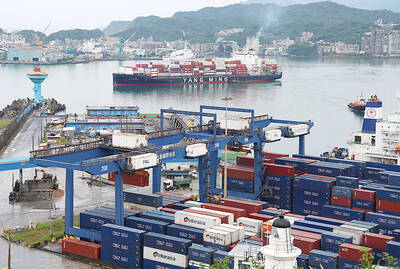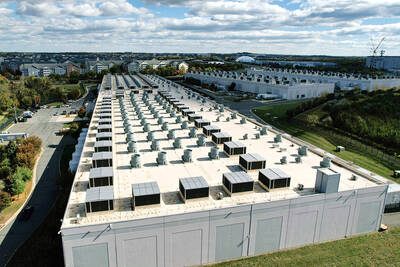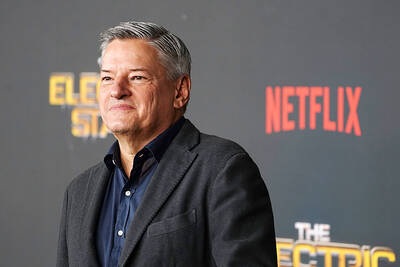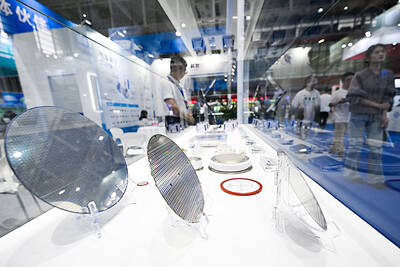Goldman Sachs Group Inc gave chairman and chief executive officer Lloyd Blankfein a US$12.6 million stock bonus for last year, an increase from US$9 million in restricted stock a year earlier.
Blankfein, 56, received 78,111 shares on Jan. 26, according to a filing on Friday with the US Securities and Exchange Commission. At the closing price of US$161.31 that day, the shares would be valued at US$12.6 million. New York-based Goldman Sachs also raised Blankfein’s base salary to US$2 million this year from US$600,000, according to a separate filing.
EARNINGS DROP
Goldman Sachs, the fifth-largest US bank by assets, reported last year’s earnings dropped 38 percent from a record in 2009 as revenue from trading stocks and bonds fell from an all-time high. The firm set aside 39 percent of revenue to pay employees last year, up from 36 percent in 2009, the lowest ratio ever.
Chief financial officer David Viniar, president Gary Cohn and vice chairmen J. Michael Evans and John Weinberg each also received 78,111 restricted shares, according to separate filings. For 2009, Blankfein was awarded 58,381 restricted stock units, the amount given to those four deputies.
Blankfein’s latest bonus falls far short of the Wall Street record that he set with his US$67.9 million bonus in 2007. The shares vest over three years and can’t be sold for five years.
INCREASED BASE
The firm also raised the base salary for those four executives to US$1.85 million each, according to the filing. Each had been paid US$600,000 previously.
Banks have been raising base salaries in response to increased pressure from regulators on bonuses. Regulators including the Federal Deposit Insurance Corp, the Federal Reserve and the Securities and Exchange Commission are drafting rules on pay meant to limit practices considered risky.
Citigroup Inc boosted CEO Vikram Pandit’s base salary to US$1.75 million from US$1 after the bank’s first profit for a year under his watch. James Gorman, Morgan Stanley’s top executive since last January, was awarded deferred stock and options valued at about US$7.4 million for his performance last year.

Taiwan’s exports soared 56 percent year-on-year to an all-time high of US$64.05 billion last month, propelled by surging global demand for artificial intelligence (AI), high-performance computing and cloud service infrastructure, the Ministry of Finance said yesterday. Department of Statistics Director-General Beatrice Tsai (蔡美娜) called the figure an unexpected upside surprise, citing a wave of technology orders from overseas customers alongside the usual year-end shopping season for technology products. Growth is likely to remain strong this month, she said, projecting a 40 percent to 45 percent expansion on an annual basis. The outperformance could prompt the Directorate-General of Budget, Accounting and

The demise of the coal industry left the US’ Appalachian region in tatters, with lost jobs, spoiled water and countless kilometers of abandoned underground mines. Now entrepreneurs are eyeing the rural region with ambitious visions to rebuild its economy by converting old mines into solar power systems and data centers that could help fuel the increasing power demands of the artificial intelligence (AI) boom. One such project is underway by a non-profit team calling itself Energy DELTA (Discovery, Education, Learning and Technology Accelerator) Lab, which is looking to develop energy sources on about 26,305 hectares of old coal land in

Netflix on Friday faced fierce criticism over its blockbuster deal to acquire Warner Bros Discovery. The streaming giant is already viewed as a pariah in some Hollywood circles, largely due to its reluctance to release content in theaters and its disruption of traditional industry practices. As Netflix emerged as the likely winning bidder for Warner Bros — the studio behind Casablanca, the Harry Potter movies and Friends — Hollywood’s elite launched an aggressive campaign against the acquisition. Titanic director James Cameron called the buyout a “disaster,” while a group of prominent producers are lobbying US Congress to oppose the deal,

Two Chinese chipmakers are attracting strong retail investor demand, buoyed by industry peer Moore Threads Technology Co’s (摩爾線程) stellar debut. The retail portion of MetaX Integrated Circuits (Shanghai) Co’s (上海沐曦) upcoming initial public offering (IPO) was 2,986 times oversubscribed on Friday, according to a filing. Meanwhile, Beijing Onmicro Electronics Co (北京昂瑞微), which makes radio frequency chips, was 2,899 times oversubscribed on Friday, its filing showed. The bids coincided with Moore Threads’ trading debut, which surged 425 percent on Friday after raising 8 billion yuan (US$1.13 billion) on bets that the company could emerge as a viable local competitor to Nvidia